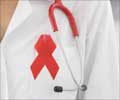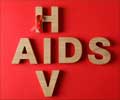Viral reservoir is the cells in which the HIV virus can lie dormant for many years and avoid elimination by antiretroviral drugs.

The findings appear online in the journal Nature.
"Our data show that in this animal model, the viral reservoir was seeded substantially earlier after infection than was previously recognized," explains senior author Dan H. Barouch, MD, PhD, Director of the Center for Virology and Vaccine Research at BIDMC and steering committee member of the Ragon Institute of MGH, MIT and Harvard. "We found that the reservoir was established in tissues during the first few days of infection, before the virus was even detected in the blood."
This discovery coincides with the recently reported news of the HIV resurgence in the "Mississippi baby," who was believed to have been cured by early administration of ART. "The unfortunate news of the virus rebounding in this child further emphasizes the need to understand the early and refractory viral reservoir that is established very quickly following HIV infection in humans," adds Barouch, a Professor of Medicine at Harvard Medical School.
In this new study, the scientific team initiated suppressive ART in groups of monkeys on days 3, 7, 10 and 14 after intrarectal SIV infection. Animals treated on day 3 following infection showed no evidence of virus in the blood and did not generate any SIV-specific immune responses. Nevertheless, after six months of suppressive ART, all of the animals in the study exhibited viral resurgence when treatment was stopped.
While early initiation of ART did result in a delay in the time to viral rebound (the time it takes for virus replication to be observed in the blood following cessation of ART) as compared with later treatment, the inability to eradicate the viral reservoir with very early initiation of ART suggests that additional strategies will be needed to cure HIV infection.
Advertisement
Source-Eurekalert














